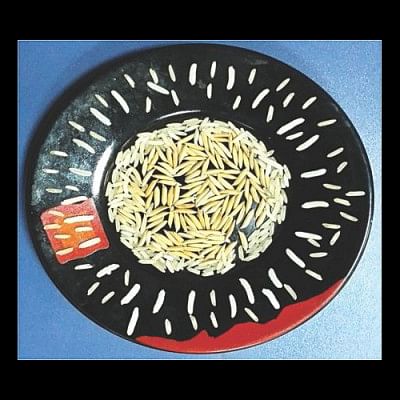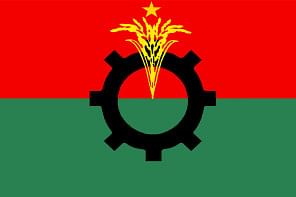New rice yields high hopes
Release of a new rice variety brings in high hopes as scientists expect it to break the long stagnation in the production growth of the staple.
Breeders at Bangladesh Rice Research Institute have developed the variety -- BRRI dhan81 -- whose per hectare output would be half a tonne more than BRRI dhan28, which is currently the most productive rice variety in the country.
There are 86 modern rice varieties in Bangladesh but the farmers plant BRRI dhan28 in an overwhelming 45 percent of the rice lands during the Boro season. Because of its high growth potential and huge acreage, scientists call BRRI dhan28 a mega variety.
Yesterday, the National Seed Board approved the new variety BRRI dhan81, which scientists hope would eventually replace BRRI dhan28 and increase the country's overall rice output significantly.

Against BRRI dhan28's per hectare yield of 6 tonnes, the BRRI dhan81 would give farmers an output of 6.5 tonnes and the rice will also be richer in protein (10.3 parts per million comparing to 8.6 ppm in BRRI dhan28).
On average, Bangladeshi consumers depend on rice for over 50 percent of their daily calorie and protein requirements.
It took 15 years for the scientists at Bangladesh Rice Research Institute (Brri) to come up with the new variety since Agriculture Minister Matia Chowdhury brought in some seeds of Amol-3 rice variety from Iran.
"We bred BRRI dhan81 through successful crosses between Iran's Amol-3 and our mega variety -- BRRI dhan28. The process of crossing, lab and field tests continued for the past 15 years and finally the seed board gave it the nod today [Wednesday]," Brri Director General Md Shahjahan Kabir told The Daily Star last night.
He said the new grain has greater elongation traits. After cooking, the rice elongates up to 1.6 times. Other high yielding varieties have 1.2 to 1.3 times elongation rate. The new variety also has export potential as the clean rice is long and slender, he said.
The new variety comes at a time when two of the country's most common rice varieties -- BRRI dhan28 and BRRI dhan29 -- released back in 1994, are losing potential due to ageing.
The prospect of higher rice yield through the release of the new variety also comes against the backdrop of diminishing returns from the country's rice fields.
A recent International Food Policy Research Institute (IFPRI) report says Bangladesh's rice production growth slowed down to just 0.7 percent in five years (2012-16), whereas the growth was as high as 4.8 percent in the preceding five years (2007-11).
Akhter Ahmed, the country head of the Washington-based food research think tank IFPRI, said, "Rice production more than tripled since the country's liberation [in 1971], but the [agricultural] growth is slowing down."
He observed that the most popular rice varieties in Bangladesh are old and they require better replacements so that farmers can reap more yield from less land and go for agricultural diversity by growing other high value crops.
Akhter put emphasis on the agricultural extension service's role in demonstrating and popularising the new potential rice varieties among the farmers. As a third of Bangladesh's total farm households are of pure tenants -- who work in lands owned by others -- it's very crucial for the state to take extension services to them, he added.
With BRRI dhan81, the number of Brri-developed rice varieties now stands at 86. Among them, six are hybrids while the rest are high yielding inbred varieties (HYVs).
Brri-developed rice varieties cover more than 80 percent of the total rice areas of the country. These varieties account for more than 91 percent of the country's total 35 million tonnes of rice production.

 For all latest news, follow The Daily Star's Google News channel.
For all latest news, follow The Daily Star's Google News channel. 



Comments